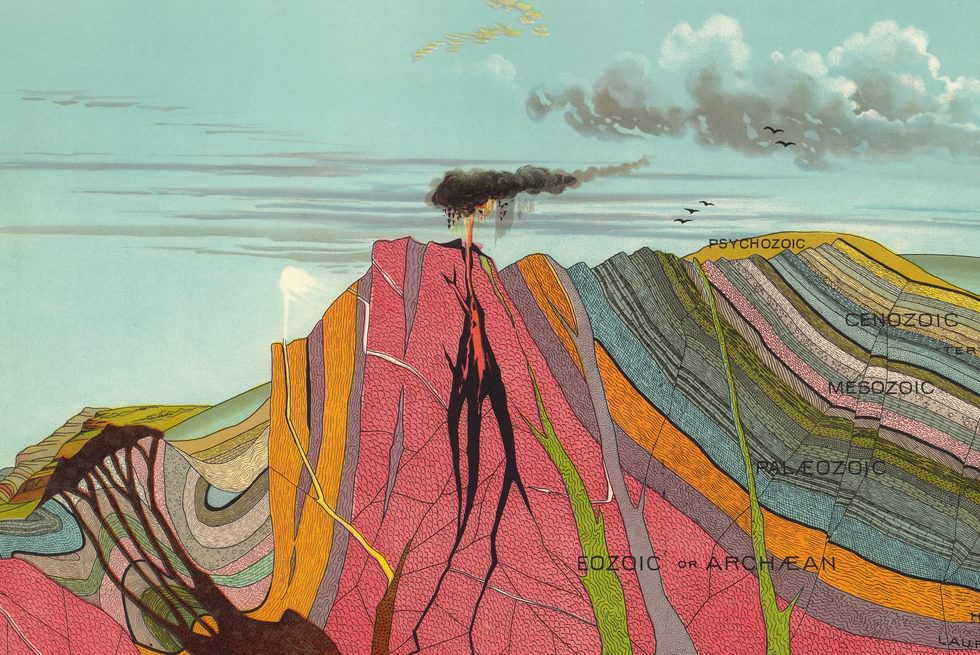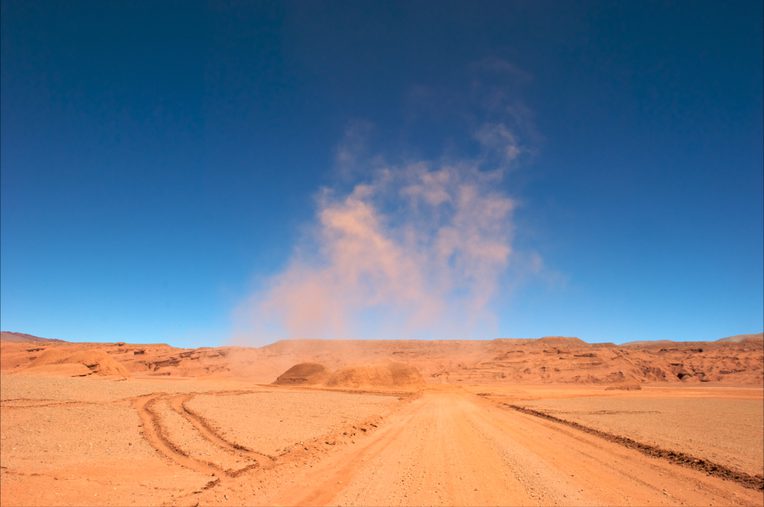The Inorganic Slot
From the Series: Geological Anthropology
From the Series: Geological Anthropology

It has now been a few years since anthropologists and their interlocutors in science and technology studies, literature, and elsewhere have expanded their inquiries into inorganic worlds, moving beyond biopower, biological sciences, and medical anthropology. Much of this work has focused on worlds defined as “geological,” with early sorties into realms of rocks, minerals, and metals, and further expeditions to earthquakes, dust, plumes, tailings, and other domains. Among other theoretical formulations for these projects, work by Elizabeth A. Povinelli (2016, 2017) on geontologies has provided a template for a politics of life beyond the organic.

Three main approaches or stances emerge from this work on inorganic worlds:
These approaches, which can be combined in different works, encompass most current anthropologies of the inorganic. They represent different disciplinary stances, and therefore include different concepts, methodologies, and modes of writing and other media of representation. They take on, in different ways and for different aims, the job of curating what could be called “the inorganic slot.”
I adapt this concept from Michel-Rolph Trouillot’s (1991) famous formulation of the savage slot. Originally published in the edited volume Recapturing Anthropology and revised for Trouillot’s (2016) final work Global Transformations, the article puts forward a bold and complex argument concerning the role of the “Savage” within a “Western” or “North Atlantic” global imaginary. Within this imaginary the “savage slot” was always to be viewed as part of a triad of savage/utopia/order. Trouillot's metaphor of a “slot” emphasizes the ways in which the contents of the slot can change, while its conceptual status and relation to other “slots” remains stubbornly enduring. This insight allowed him to trace an immensely long biography of the Savage, and to show how anthropology came to emerge as the discipline tasked with caretaking and curating the “savage slot,” so that “[a]nthropology did not create the Savage. Rather, the Savage was the raison d'être of anthropology” (Trouillot 2016, 28).
Trouillot traced the history of the concept both in connection to other disciplines with other job descriptions and as a consequence of a much larger and older process of North Atlantic imaginative projects, initiated as early as 1515 and elaborated much more completely through the system of colonialism-extractive capitalism-slavery. In tracing this longue durée, he notes that
the symbolic transformation through which Christendom became the West structures a set of relations that necessitate both utopia and the Savage. What happens within the slots so created—and within the genres that condition their historical existence—is not inconsequential. But the analysis of these genres cannot explain the slots nor even the internal tropes of such slots. (Trouillot 2016, 14–15)
More recently, scholars have retooled the concept to identify a “tribal slot,” “mascot slot,” “suffering slot,” and so on (Li 2000; Strong 2004; Robbins 2013). These uses have illuminated imaginaries of inequality and have clarified important connections between ethnographic representation and non-academic discourses. However, they have to greater and lesser degrees borrowed the word slot in a way that dislocates it from the concept slot, ignoring or downplaying the relational aspect of the concept—the positioning of the Savage in relation to civilization and utopia as part of a larger project.
By “the symbolic transformation through which Christendom became the West,” Trouillot (1991, 14) means the reorganization of the world through colonial capitalism sustained by the African slave trade and slave labor. Because this new world order is fundamentally motivated by and structured according to the extraction of primary commodities through mining and plantation labor, it behooves us to add to this triad a fourth slot, the inorganic slot, and to turn our attention to the disciplines tasked with curating it: geology and the other earth sciences. As with the savage slot, “the space within the [inorganic] slot is not static” (Trouillot 2016, 23) and can include resource-making projects of various sorts (Ferry and Limbert 2008), scientific classification, and the mobilization of precious metals and minerals through display, monetization, hoarding, and so on. Its inclusion within Trouillot’s mapping of a North Atlantic imaginary emphasizes the fundamentally extractive character of that imaginary.

In her book A Billion Black Anthropocenes or None, Kathryn Yusoff (2018) discusses the history of “white geology” in the formation of the modern world-system, pointing out the mutual constitution of race and extractive capitalism and the ways in which contemporary conversations about the Anthropocene continue to center on Europe, reproducing the very forms of violent erasure that motivate colonial capitalism in the first place. Her critique powerfully shows how seemingly disparate processes are in fact part of one composite logic of racialization, dehumanization, and extraction. A mobilization of the concept of the inorganic slot can build on this insight, while also drawing on Trouillot’s more particularist perspective that includes disjunctions, slippages, and historical shifts less clearly visible in Yusoff’s more synthetic view. It can also provide a framework for bringing together the many recent studies ranging from rocks and fossils to plate tectonics, plumes, and Chinese land-turned-weather-event into a relational, critical anthropology of the inorganic.
Ferry, Elizabeth Emma, and Mandana Limbert. 2008. Timely Assets: The Politics of Resources and Their Temporalities. Santa Fe, N.Mex.: School for Advanced Research Press.
Galison, Peter. 2004. Einstein’s Clocks, Poincaré’s Maps: Empires of Time. New York: W. W. Norton.
Helmreich, Stefan. 2011. “Nature/Culture/Seawater.” American Anthropologist 113, no. 1: 132–44.
Li, Tania M. 2000. “Articulating Indigenous Identity in Indonesia: Resource Politics and the Tribal Slot.” Comparative Studies in Society and History 42, no. 1: 149–79.
Povinelli, Elizabeth A. 2016. Geontologies: A Requiem to Late Liberalism. Durham, N.C.: Duke University Press.
———. 2017. “Geontologies: The Concept and Its Territories.” e-flux no. 18.
Robbins, Joel. 2013. “Beyond the Suffering Subject: Toward an Anthropology of the Good.” Journal of the Royal Anthropological Institute 19, no. 3: 447–62.
Strong, Pauline Turner. 2004. “The Mascot Slot: Cultural Citizenship, Political Correctness, and Pseudo-Indian Sports Symbols.” Journal of Sport and Social Issues 28, no. 1: 79–87.
Trouillot, Michel-Rolph. 1991. “Anthropology and the Savage Slot: The Poetics and Politics of Otherness.” In Recapturing Anthropology: Working in the Present, edited by Richard G. Fox, 17–44. Santa Fe, N.Mex.: School for Advances Research Press.
———. 2016. Global Transformations: Anthropology and the Modern World. New York: Palgrave Macmillan.
Yusoff, Kathryn. 2018. A Billion Black Anthropocenes or None. Minneapolis: University of Minnesota Press.